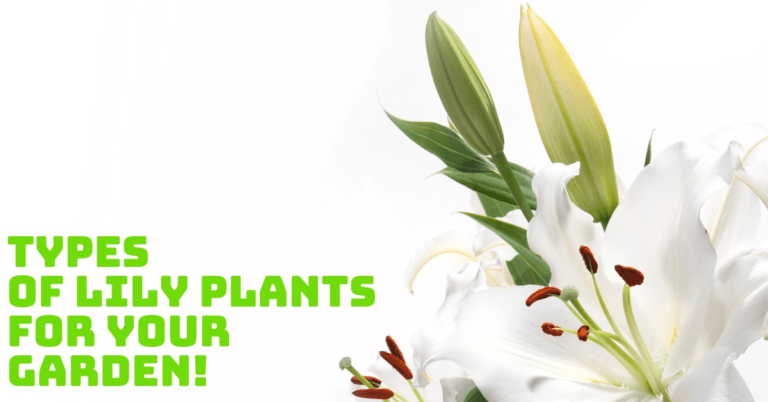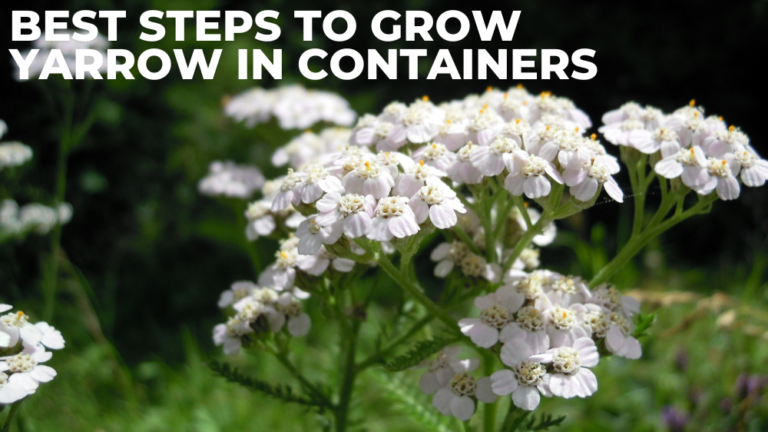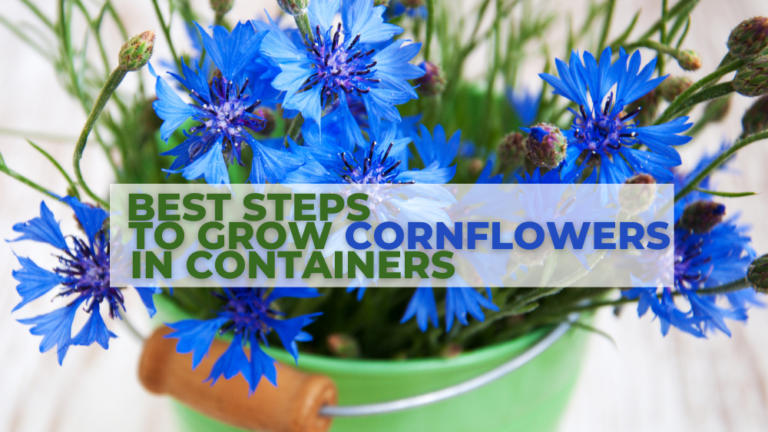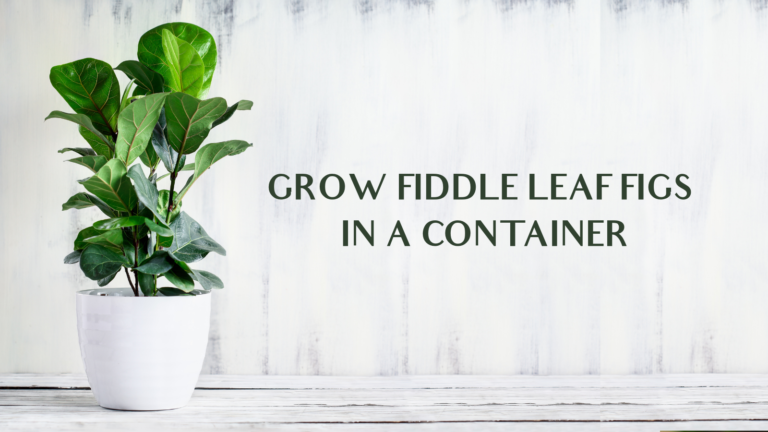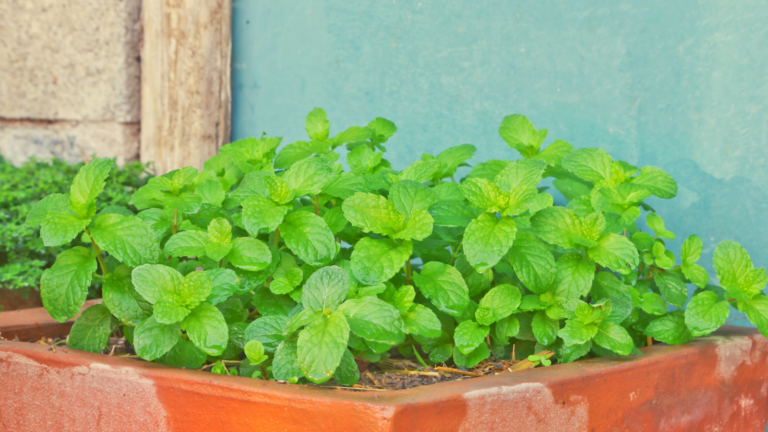Best Steps To Grow Lentils In Containers
Best Steps To Grow Lentils In Containers
If you have only ever grown the green varieties of members of the bean family, it may be time to try growing lentils (Lens culinaris Medik.).
Lentils are simple to cultivate and store for later, allowing you to use your green thumb to make a tasty pot of winter stew.
Growing lentils in containers is a hobby. Because lentils are an annual crop, you can start early in the growing season, and you prefer cooler conditions.
History & Origin Lentils
Lentils have nourished our ancestors since prehistoric times and are believed to have origins in the Near East or the Mediterranean region. They are one of the first domesticated crops and the oldest pulse crop known to man.
The word lentil is derived from the Latin word lens, and this bean cousin resembles the double convex optic lens that gave the lentil its name.
Lentil artifacts from 8,000 B.C. and earlier have been discovered on archeological digs on the Euphrates River's banks.
There is also proof that the Egyptians, Romans, and Hebrews consumed this legume. The Bible also mentions lentils; one instance is in the narrative of Esau, who gave up, found in the book of Genesis.
The plant has numerous ascending branches and grows between 15 and 45 cm (6 and 18 inches). The alternating compound leaves consist of six pairs of oblong linear leaflets, each about 15 mm (0.5 inches) long and ending in a spine.
Two to four light blue flowers appear in the leaf axils in early July or June. Two seeds in the shape of a double convex lens measuring around 4-6 mm (0.17-0.24 inch) in diameter are contained in the little pods, which are broadly oblong and slightly inflated.
Numerous cultivated varieties of the plant exist, each with unique leaves, blooms, and seeds that vary in size, hairiness, and colour.
The seeds can be white, yellow, orange, tan, green, gray, or dark brown; they can also occasionally be mottled or speckled. The form of the seeds can be more or less compressed.
Types Of Lentils
One of today's most nutrient-dense foods is lentils. However, there are numerous varieties of lentils, some of which you may not be familiar with.
Knowing your lentils can help you choose the one that will work best for your dish. You'll also learn more about how they differ from one another and their nutritional value.
So, let's review the lentil varieties in this blog post. You will also see pictures of these lentils to recognize them immediately.
To grow lentils in containers, you should know the best varieties.
1. Brown Lentils
The most well-known and frequently used lentils you may have previously encountered are brown ones.
From khaki brown to very dark brown, their distinctive hue is brown. Since they are smaller than most varieties of lentils, they cook more quickly.
Brown lentils are undoubtedly distinguished from other varieties by their flavour. They are notably mild and earthy.
Because of their tasty flavour, people enjoy them in soups, stews, salads, vegetarian burgers or meatballs, casseroles, and vegan dishes.
2. Red Lentils
Red lentils, often called Egyptian or split lentils, comprise several subtypes in various hues, including pink, yellow, and, most frequently, orange.
They are all sweet and nutty and go well with hearty soups, stews, curries, dipping sauces, etc.
When cooked, red lentils lose shape, so keep that in mind. They can quickly get overcooked and mushy since they have a softer texture than most other varieties of lentils.
Making red lentil soup, a famous soup in Sudanese cuisine, is another way to use red lentils to make the tastiest Sudanese food ever! Because of their mushy texture, they are great for thickening light meals.
3. Black Lentils
Do you know that the most expensive and rarest variety of lentils is black? They are also nutrient-dense lentils with a lot of protein.
They resemble small black tapioca or black caviar in appearance, so they are also known as Beluga caviar.
Many fantastic foods contain anthocyanins, powerful antioxidants that fight infections, inflammation, and cancer. This chemical also gives black lentils their dark hue.
Black lentils have a strong earthy flavour and a fantastic consistency after being boiled, making them ideal for salads and side dishes.
You might need more time to cook these lentils, though. To soften the seeds, you should also soak them for a few hours before cooking them.
4. Green Lentils
The Le Puy lentil variety on this list is the green variety. They are predominantly light green, ranging from khaki to brilliant green, or a green-slate tint with a tinge of blue or black.
They also feature a unique flat form that resembles tiny discs. When you consume green lentils, you can taste their mildly nutty, earthy flavour with a peppery undertone.
Green lentils are incredibly rich in antioxidants, magnesium, and iron. After being cooked, they have a nice consistency and may be used in many different cuisines.
Additionally, it has an adaptable flavour that works best when added to salads, soups, and side dishes. Boiling green lentils provide a tasty and nutritious bite-sized snack.
5. Puy Lentils
Puy lentils acquired their name from Le Puy, where they were initially harvested. They are remarkable in consistency.
They are hard, firm beans that keep their shape nicely when cooked. When eating this kind of lentil, you can detect a peppery flavour.
Puy lentils are much smaller and darker than traditional green ones, which you may notice if you compare the two.
Additionally, they are more expensive and rarer than regular green types. Puy lentils are a great way to spice up your salads!
To give the salad a nice texture, you can use a pressure cooker. Another intriguing fact is that you can speed up the cooking of lentils.
6. Mountain Lentils
There isn't a variety of mountain lentils. They are more of a collection of various lentils that, as the name implies, are cultivated in different mountainous areas. They are all grown at altitudes of at least 700 meters.
Contrary to popular belief, red and yellow lentils do not have their variety. They are both peeled brown lentils, frequently listed as mountain ones. The colour difference exists in the core, not the skin.
Grow Lentils In Containers
1. Location To Grow Lentils In Containers
Containers are frequently used to grow lentils along with garden beds. However, immature crops need to be shielded from the wind and frost.
Pick a spot that receives full sun and some protection from strong winds—growing as branching vines and lentil plants.
They spread out quickly and require a large area. For support and adequate airflow, the plants need a low trellis.
2. Choose The Right Container To Grow Lentils
If you grow your lentils in a container, use one at least 8 inches (20 cm) deep to allow for proper root development.
3. Soil To Grow Lentils In Containers
Place them next to low-lying plants to prevent the lentils from being obscured. Keep the soil moist, but avoid letting water collect on the surface to prevent the roots from becoming damaged.
If you decide to put your lentils in a container, use one at least 8 inches (20 cm) deep to allow for proper root development.
If you are worried about the acidity or alkalinity of your soil, get a simple pH test at the garden center. Lentils thrive in the pH range of 6.0 to 6.5.
4. Temperature & Weather To Grow Lentils In Containers
Sow seeds in the early spring. March's chilly, crisp weather is ideal for lentil growth. Lentils mature during the sweltering summertime.
When you plant, the ground temperature must be at least 40° Fahrenheit (4° Celsius) to keep your seeds alive.
After planting, you shouldn't be alarmed if there is a frost because most seedlings will survive it, even if they have to start again at the roots.
Lentils can also be grown inside if you want more adaptable growing alternatives, provided the ambient temperature is roughly 68° Fahrenheit (20° Celsius).
Some individuals use indoor garden lighting to maintain a constant temperature during the colder months.
5. Sunlight Requirements To Grow Lentils
Lentils do best when grown in full sunlight. For optimum development, aim for 8 hours per day of healthy sunlight. They also grow best when the soil is warm, but the temperature is cool.
Although they can be cultivated in milder climates, they usually perform at their peak once it becomes pleasant outside.
Even though these plants can withstand heat, they occasionally produce less if the temperature rises too high. Long durations over 90°F can dramatically limit the size of the harvest.
6. Water & Humidity Requirements To Grow Lentils
Your lentils need at least one inch of water every week, but they may need a little extra during warmer weather. The best time to water is in the morning when the day's warmth will help damp leaves dry out.
Instead of soaking down the foliage, try to water it at the soil level. Stop watering as the pods start to dry up. It also weakens the lentil plant, making it easier to harvest later.
This enables the pods to dry out correctly. Several illnesses that affect growing plants are more prevalent in humid environments.
A 30% to 40% lower humidity range is almost optimum for these plants. Many regions of the world use drier seasons to cultivate their flora.
7. How To Plant Lentils In Containers
Before planting Lens culinaris, the seeds must be injected with Rhizobium leguminosarum, a naturally occurring bacteria.
This rhizobacterium attaches to the developing roots and takes nitrogen from the air, transferring it to the roots and soil and promoting more vigorous plant growth. Inoculated plants might, therefore, be excellent nitrogen fixers in your garden.
Inoculate the seeds on the day of planting. The seeds should be wet before being thoroughly coated with the inoculant powder.
The seed should be sown right after being coated in starter pots or the ground. It's usually ideal for spreading seeds approximately one inch deep.
As soon as the seedlings appear, they should be separated by 5 inches, and only the strongest ones should be kept.
When working with many rows, ensure they are at least 18 inches apart. Germination should take about 10 days in soil, around 68°F.
Plants started in containers should be trimmed to the strongest seedlings and spaced at least 5″ apart. Transplant the lentil plants at the same depth as in the container.
8. Fertilizing Lentils
Unlike many plants dependent on nitrogen, lentils adhere to the exact requirements of beans, peas, or other legumes.
After germination, when they have their most significant need for nitrogen, the inoculant you gave them can provide 80% of that need. As a result, your fertilizers should concentrate more on phosphorus and potassium.
While potassium is essential for blooming and pod development, phosphorus is a comparatively high requirement for proper root development.
When growing lentils, begin with soil rich in organic matter. This should immediately provide the nitrogen you require.
Then, as the lentil plants grow, you can add an organic granular fertilizer with a low N and high P&K ratio. One or two fertilizer applications for the season should be sufficient.
Be cautious and use organic sources over crystalline ones. Salts of all kinds can readily burn the roots of lentils, which are sensitive to them.
Sulphur may also benefit your lentils as extra nutrition. If a modest amount of sulphur is applied along with your first feeding, the seedlings can better absorb the PK fertilizers.
Be cautious that your soil may not truly need the sulphur if it is alkaline because it may already have it.
9. Pruning Lentil Plants
Lentils don't require pruning during the growing season. A few situations are an exception to this rule.
One is removing contaminated material to stop the disease or pest from spreading. Another is allowing densely populated foliage to receive airflow.
They must be trained to a trellis, which frequently eliminates the need for pruning to open up the plant, but this is still necessary.
Even while they will climb independently, plant ties can help strengthen the stem's connection to the trellis and provide additional support.
10. Propagation Of Lentil Plants
The simplest way to grow lentils is from seed. Since these annuals will grow rapidly from seed, it is uncommon to need to employ any other technique.
After being infected following our above planting instructions, lentil seeds should be planted 1″ deep.
You can choose not to administer the fertilizer, but the lentils require additional nitrogen fertilizer. Our advice is to vaccinate your seeds before planting them.
11. Pests And Diseases Of Lentils
Various pests can harm your lentils, but these problems often don't have a significant negative impact. However, you still need to take action to lessen the insect population in your garden.
Aphids and thrips, two sucking pests, are opportunistic pests on lentils. They prefer juicy prey but will settle for your vines' foliage if they can get it.
Thrips are frequently found on flowers, and yellow speckling on foliage signifies that aphids are hidden on the underside.
Both populations can be significantly decreased with regular application of neem oil to all foliage, both on the top and underside.
The roots of your legumes are delicious to the larvae of this click beetle, which reside in the soil and consume organic materials.
Beneficial nematodes or pyrethrin spray might be used to treat them. Crop rotation will also lessen their likelihood of appearing.
Fusarium root rot and Rhizoctonia root rot are the two types of root rot that affect lentils the most. Both are brought on by fungi found in soil.
MycoStop, a bio-fungicide, is being applied with some success against fusarium but marginally less success against Rhizoctonia.
12. Harvesting & Storing Of Lentil
Lentil harvesting is a relatively straightforward procedure. Once the pods start to dry, stop watering the plants.
After letting the vines dry completely, pull them out and remove the pods. Then, add the vines to your compost pile to decompose there.
The seeds must then be removed from their pods and laid out on a tray in a cool, dry area to dry completely. It's straightforward to store your dried lentils.
Keep them in a dark and sealed cupboard. Add a desiccant packet made for use with food to reduce any moisture that may still be present in the container. If kept dry, they can last quite a while, although it is better to use them within a year of harvest.
Conclusion
Superfood lentils can significantly increase your protein intake. Fortunately for would-be gardeners, they are also simple to grow and care for.
Start with high-quality lentils or seeds. Grow lentils in containers with plenty of sunlight and water. If all goes well, they should be ready to harvest in about 100 days.
I trust you enjoyed this article on the Best Steps To Grow Lentils In Containers. Please stay tuned for more blog posts soon. Take care!
JeannetteZ
>>>Please click here to read my all-inclusive article about Container Gardening<<<
>>>Are you interested in homegrown herbs and medicine? Please click here to find out more about it!<<<
Your Opinion Is Important To Me
Do you have thoughts, ideas, or questions? I would love to hear from you. Please leave me your questions, experiences, and remarks about this article on the Best Steps To Grow Lentils In Containers in the comments section below. You can also reach me by email at Jeannette@Close-To-Nature.org.
Disclosure
This post may contain affiliate links. I earn from qualifying purchases as an Amazon Associate and other affiliate programs. Please read my full affiliate disclosure.
You might also enjoy these blog posts:
Best Steps To Grow Zucchini In Containers
Best Steps To Grow Pumpkins In Containers
Best Steps To Grow Kiwi In Containers
Best Steps To Grow Asparagus In Containers
Best Steps To Grow Brussels Sprouts In Containers















